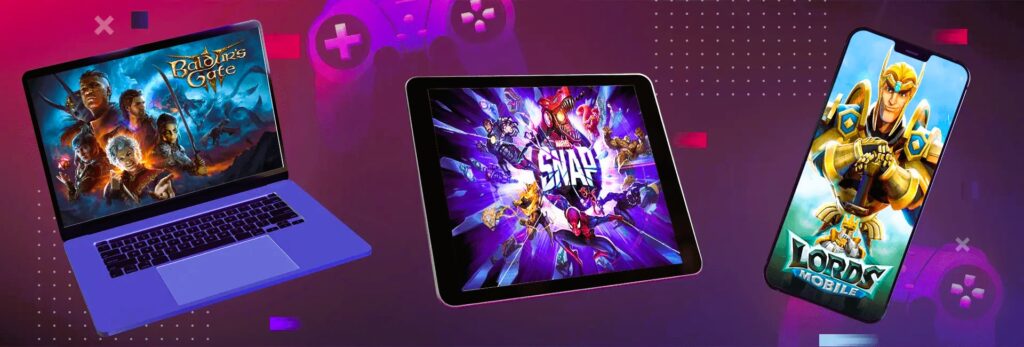The gaming industry has come a long way in terms of technological advancements and gameplay experiences. One of the most notable trends in recent years has been the rise of cross-platform play — a feature that allows players on different gaming platforms to play together in the same online multiplayer environment. But with the increasing popularity of cross-platform play, one burning question remains: Will all games become cross-playable in the future?
To understand the potential future of cross-platform play, we need to take a closer look at the current state of gaming, the challenges involved in implementing cross-play, and the factors that could shape the evolution of cross-platform functionality.
What Is Cross-Platform Play?
At its core, cross-platform play allows players to engage with each other, regardless of the gaming platform they are using. For instance, a player on Xbox can join a game and play with someone using a PlayStation or PC. This allows players to enjoy the same game with their friends and the larger community, without being confined to a single platform.
In the early days of gaming, cross-platform play was virtually unheard of. Consoles were designed to function in their own ecosystems, with limited communication or interaction between different platforms. However, over the years, as online multiplayer games gained traction, the gaming community began to demand a more inclusive, interconnected experience. Developers and platform holders slowly started to experiment with cross-platform functionality, and it has since become one of the most requested features for modern games.
The Current State of Cross-Platform Play
As of today, several major multiplayer titles have adopted cross-platform play to varying extents. Games like Fortnite, Minecraft, Rocket League, and Call of Duty: Warzone allow players to connect with friends and strangers alike across multiple platforms. These games have become some of the biggest hits in the industry, and their success has demonstrated the benefits of allowing players from different ecosystems to interact. Like our article? Read also about Mobile Gaming Industry.
However, despite the progress made in cross-platform play, there are still limitations. Not all games support cross-play, and even in those that do, the level of cross-platform integration may vary. Some games allow players to connect only within certain ecosystems (e.g., PlayStation and PC players), while others may support a more extensive range of platforms. Additionally, the quality of the experience may differ depending on the platform, with some gamers experiencing advantages due to hardware performance or input devices (e.g., keyboard and mouse vs. controller).
One of the biggest hurdles that developers face when enabling cross-platform play is the technical infrastructure required to connect different platforms. Each platform has its own set of rules, performance standards, and software architecture. Creating a seamless experience across all platforms requires extensive coordination between platform holders like Sony, Microsoft, and Nintendo. Furthermore, the balance between platform-specific features (e.g., exclusive content, performance optimization) and fairness in gameplay (e.g., equal performance) adds complexity to the implementation of cross-play.
The Challenges of Implementing Cross-Platform Play

While the idea of universal cross-play is appealing, there are several challenges that developers and platform holders must overcome. These challenges are not only technical but also economic, social, and even political in nature.
1. Technical Limitations:
Each gaming platform — whether it’s a console, PC, or mobile — operates on a different system architecture. This means that connecting these platforms for a smooth and seamless multiplayer experience requires significant technical adjustments. Platforms like PlayStation, Xbox, and Nintendo Switch use proprietary software, making it difficult for developers to create a unified multiplayer experience. Furthermore, the disparity in hardware performance between consoles and PC can lead to imbalances in gameplay. For instance, a PC player using a keyboard and mouse might have an advantage over a console player using a controller.
2. Platform Policies:
Another significant barrier to cross-platform play is the policies set by platform holders such as Sony, Microsoft, and Nintendo. While Microsoft and Nintendo have been relatively open to the idea of cross-play, Sony has been more cautious. Sony has historically been reluctant to allow cross-play with other platforms, citing concerns over player safety, content moderation, and the overall experience. However, recent moves, such as allowing cross-play in games like Fortnite, suggest that Sony may be more willing to embrace cross-platform functionality in the future.
3. Business Models and Competition:
The gaming industry is highly competitive, and platform holders often rely on exclusive games and services to attract players to their ecosystems. If cross-play becomes the norm, it could undermine the competitive advantages that exclusivity offers. For example, if a game like Halo were available to play with people on PlayStation or PC, it could reduce the incentive for players to buy an Xbox. This is why some platform holders are hesitant to fully embrace cross-platform play, as it could potentially impact their market share and revenue.
4. Security and Moderation:
Another challenge of cross-platform play is ensuring the safety of players. Different platforms have different systems in place for moderating online behavior and managing player accounts. This inconsistency can lead to issues such as cheating, harassment, or account theft when players from various platforms interact. Developers must implement robust security systems to protect all players, regardless of the platform they are using. This adds another layer of complexity to cross-platform functionality.
The future of cross-platform play is an exciting one, and while not every game may be cross-playable, the trend toward inclusivity and connectivity is clear. As technological advancements continue, we can expect to see more games adopting cross-play functionality, provided that the technical, policy, and business challenges are addressed. Ultimately, the goal is to create a unified gaming community where players can interact, compete, and collaborate without being limited by the platform they choose to play on.
For more information about the evolving landscape of gaming, you can visit sources like Wikipedia’s article on cross-platform play.






